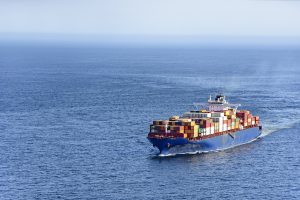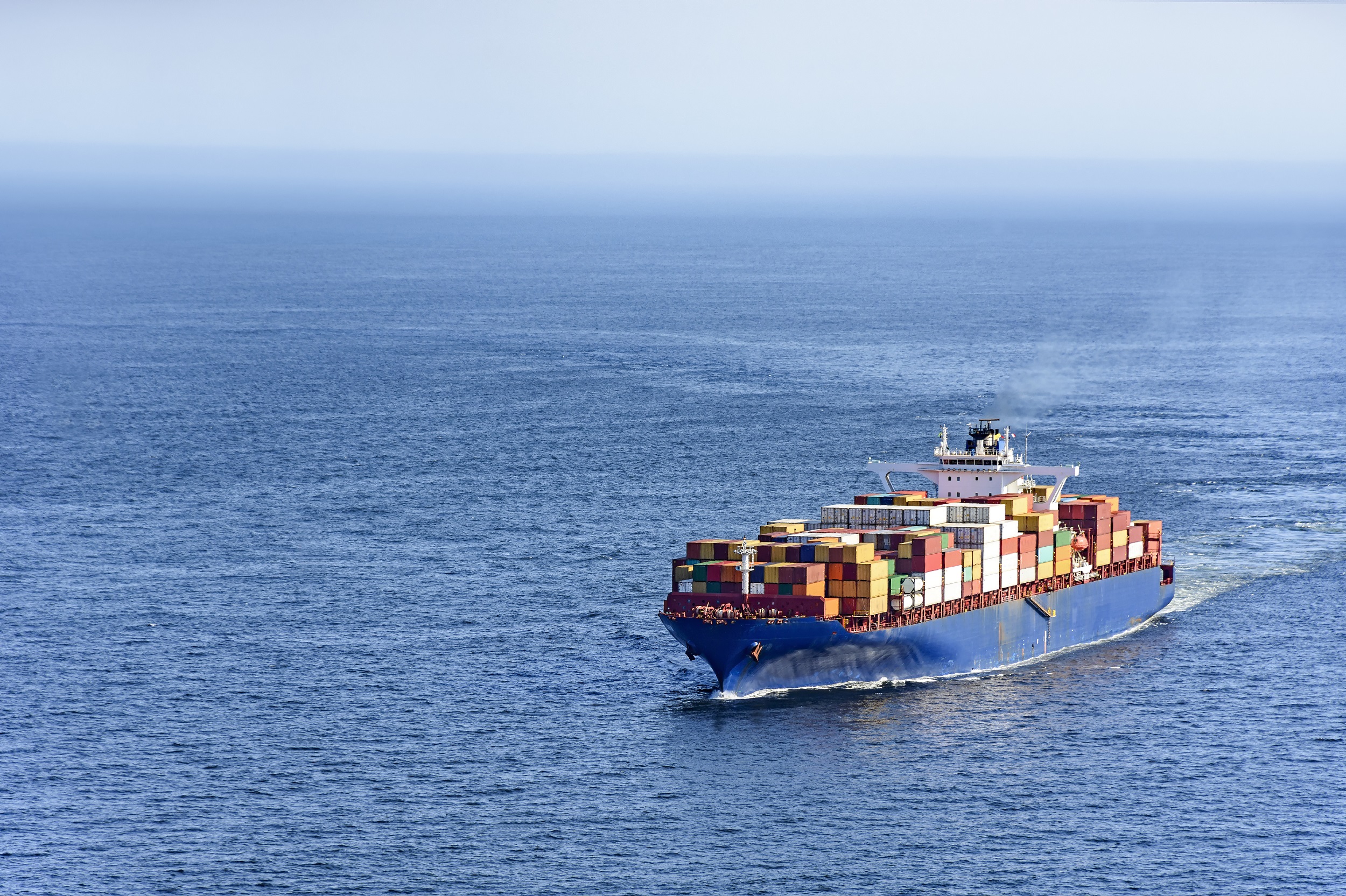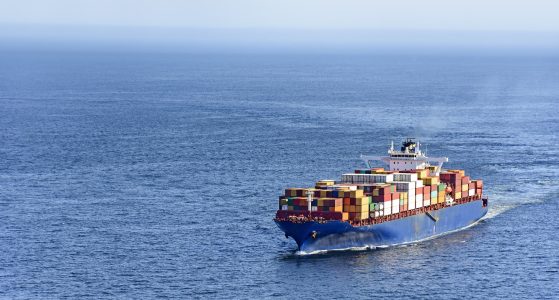 Ballast water is used when vessels take ocean water into special compartments, called ballasts, to provide stability and optimal waterline on a ship’s hull. Ballast water is either taken onto the ship or released back into the ocean as cargo is loaded or unloaded to maintain balance and structural integrity. The practice of adding ballast water in one port and releasing it into a foreign port has caused a huge detrimental impact on communities worldwide with harmful bio invasion. UV treatment of ballast water to kill or neutralize the organisms in ballast water is a proven treatment technology for large vessels and tankers.
Ballast water is used when vessels take ocean water into special compartments, called ballasts, to provide stability and optimal waterline on a ship’s hull. Ballast water is either taken onto the ship or released back into the ocean as cargo is loaded or unloaded to maintain balance and structural integrity. The practice of adding ballast water in one port and releasing it into a foreign port has caused a huge detrimental impact on communities worldwide with harmful bio invasion. UV treatment of ballast water to kill or neutralize the organisms in ballast water is a proven treatment technology for large vessels and tankers.
With the increase in global trade in the last few decades, 90% of global trade is now transported by sea. When ships began utilizing steel hulls, the opportunity to use ballast water for stability greatly increased the practice of ballast water exchange. Each year up to 12 billion tons of ballast water is dumped around the world, releasing aquatic organisms that are not native to the environment they are released in. These foreign invaders include marine sea creatures, bacteria, viruses, and microorganisms naked to the human eye and have also been known to include things like toxic algae and Cholera which have caused serious illness and even death to people in affected communities. Bio invasions from contaminated ballast water are recognized as one of the top four greatest threats facing the sustainability of the world’s oceans. Contaminated ballast water causing harmful bio invasion is a serious threat facing oceans today along with physical destruction and alteration of marine habitats, the overexploitation of living marine resources, and marine pollution caused by land-based sources.
Ballast Water Management Convention
The International Maritime Organization (IMO) adopted the Ballast Water Management Convention (BWMC) in 2004 which established standards and procedures to prevent the spread of harmful marine organisms from one port to another region. The most recent ratification by the required number of global states makes the BWMC globally enforceable to all ships traveling through international waters, effective September 8, 2017. All ships traveling through international waters are required to manage ballast water and sediments with a ballast water management system. All ships must maintain a ballast water management certificate along with the record book, which is subject to inspection by any port authority. Newly constructed vessels must have an onboard ballast water treatment system while existing ships encounter phased-in requirements. Ballast water treatment systems must meet IMO guidelines and US Coast Guard approval. There are basically three types of ballast water treatment technologies which include:
- Physical / Mechanical filtration
- Chemical / Electrochlorination
- UV Treatment with UVC germicidal technology
Compliant ballast water treatment technologies must actively remove, neutralize, or kill organisms prior to discharge. This differs from conventional methods which required ships to exchange ballast water mid-ocean or at least 50 nautical miles from shore. UV treatment of ballast water is gaining popularity as ship owners and operators are realizing the many advantages of this environmentally friendly ballast water treatment system.
UV Treatment of Ballast Water in Large Vessels
UV treatment offers many advantages over other treatment technologies and is changing the thinking of shipowners when it comes to large vessels and tankers. Electro-chlorination has been popular for large flow vessels, although UV ballast water treatment systems are proven highly competitive with respect to power consumption, footprint, safety, and effectiveness. Modern solutions that incorporate specially designed UVC germicidal lamps easily compete on footprint and power consumption even at high flows at or above 1500–3000 m3/h. Lower operating costs combined with simple operation and highly effective germicidal results are tipping the scale towards ultraviolet treatment.
UV Treatment of Ballast Water Versus Electrochlorination
Power Consumption
UV treatment of ballast water is proven to provide similar power consumption as electro-chlorination water treatment systems, with additional recognized advantages. Electro-chlorination treatment systems depend upon the salinity and temperature of seawater, using significantly more power in low-salinity or low-temperature conditions. UV ballast water treatment systems are completely unaffected and operate independently of water temperature or salinity.
Footprint
UV ballast water treatment systems can be configured to match the footprint and water flow of a particular vessel and can even be smaller than electrochlorination systems. UV water treatment systems also require less space than electrochlorination treatment systems as there is no need to handle and store chemicals. UV ballast water treatment systems are also less costly and easier to install.
Safety
Chlorination systems may require additional ventilation, explosion-proof storage compartments, and safety training for the crew. Electrochlorination produces both chlorine and hydrogen gases which are toxic and highly flammable when mixed. UV water treatment systems are safe, simple to handle and chemical-free. UV germicidal lamps produce no harmful by-products and do not require additional measures to prevent corrosion or neutralize oxidants. UV ballast water treatment methods offer these benefits with power consumption, footprint, and safety as well as many additional operational advantages. UVC germicidal technology is proven to quickly eradicate bacteria, viruses, and microorganisms naked to the human eye. UV radiation when emitted at 254 nm instantly penetrates the DNA of these living cells, rendering them unable to replicate and harmless.
LightSources Offers UV Lamps for Ballast Water Treatment
LightSources is a leading global supplier and recognized authority on UV lamps and UVC germicidal solutions. We offer a wide selection of germicidal lamps proven effective in surface, water, and air disinfection systems found worldwide. Our skilled engineers possess in-depth expertise of UV radiation and custom development of germicidal lamps to meet your specifications.
LAMP PRODUCT DATA:
UV Germicidal LampsLAMP Applications:
UV Germicidal ApplicationsLightSources offers patented low-pressure Amalgam lamps and medium pressure UV (MPUV) lamps proven effective in ballast water treatment applications. We custom design germicidal solutions which match your ship size and water flow. LightSources has partnered with makers of ballast water treatment systems to offer the most effective and energy efficient UV treatment of ballast water.
This post is also available in:
 Chino simplificado
Chino simplificado Inglés
 Alemán
Alemán


